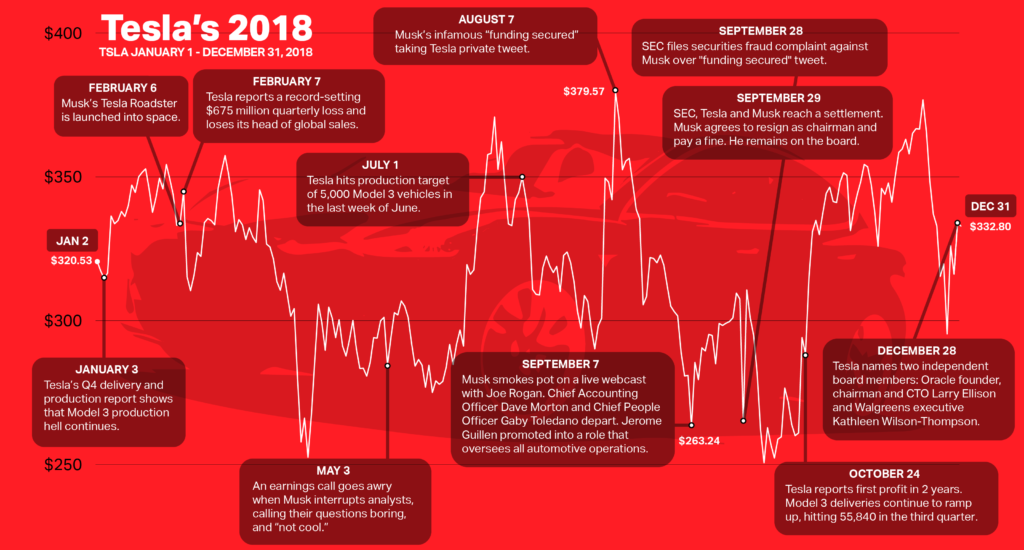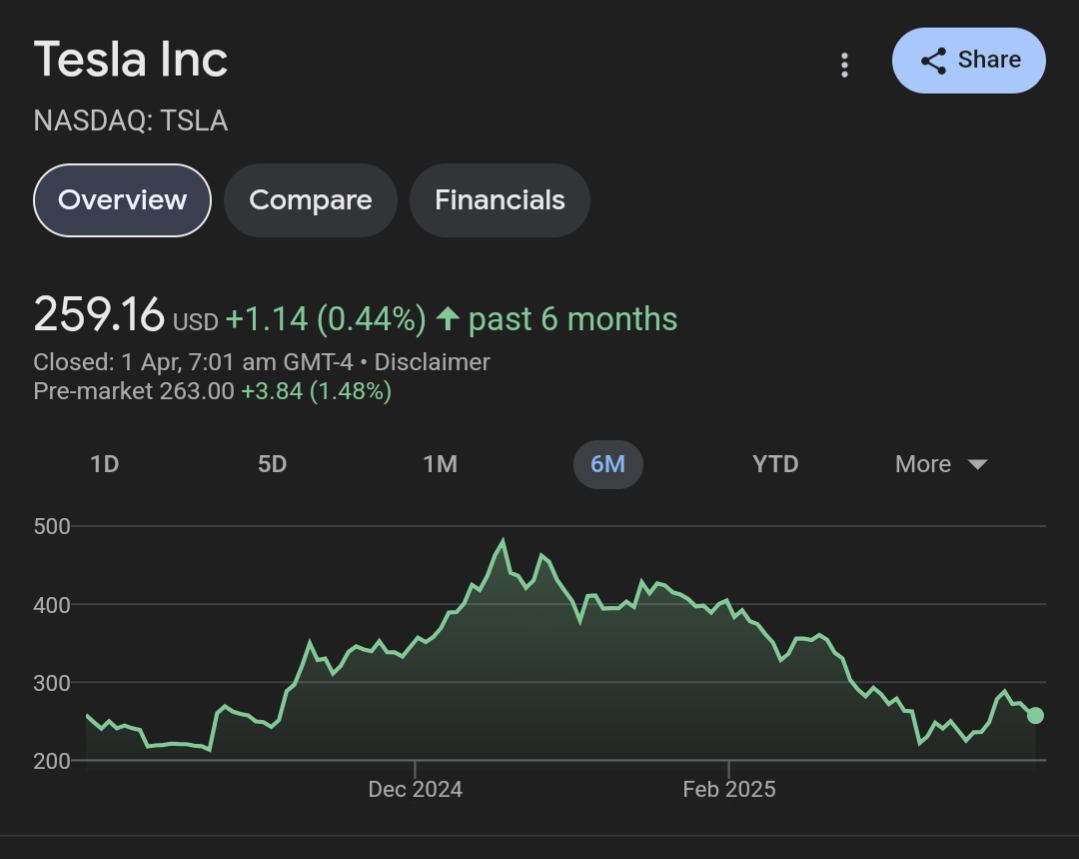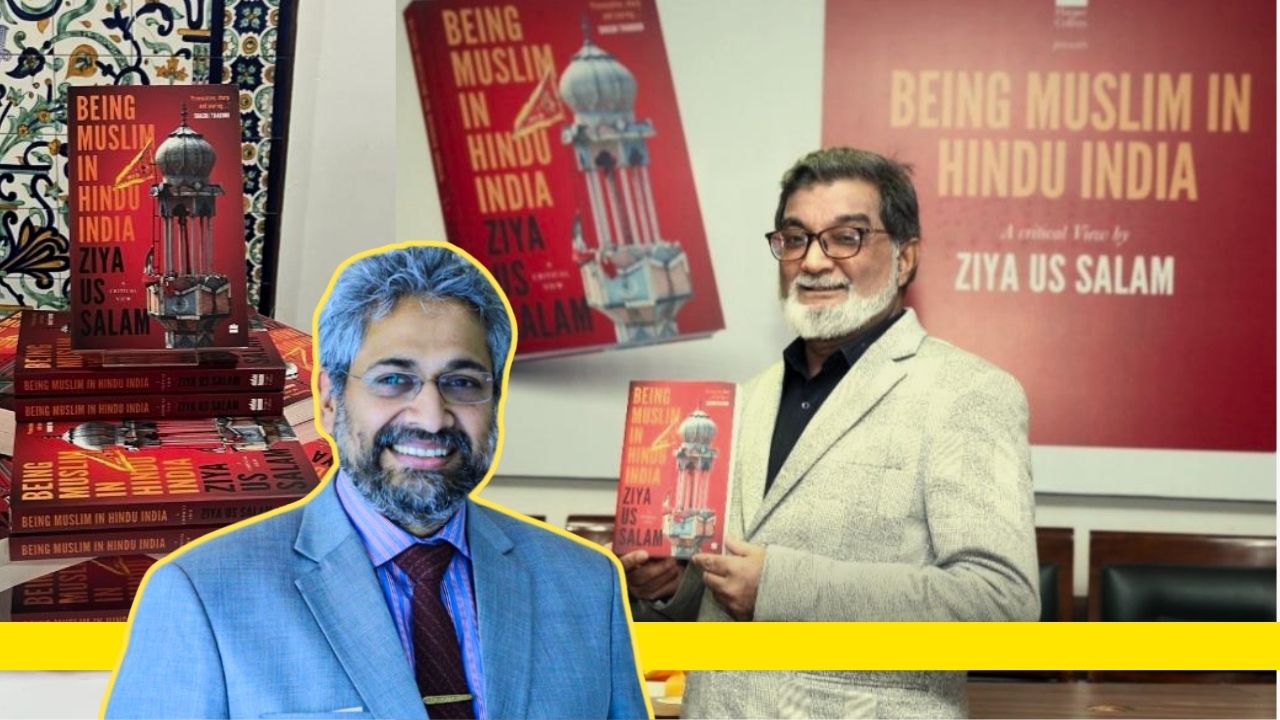Laws of Gravity Catching up With Tesla

We are not talking here about Nikolai Tesla, the genius who invented the AC motor and whose design is the basis of almost all electric motors today, including electric vehicles (EVs). This article is about Tesla, the car company that has become synonymous with Elon Musk. Tesla’s share price, which defied the laws of gravity for years, is now on a steep downward trajectory, losing about half its market value over the past three months. Statista notes that it has lost the title of being the world’s leader in producing EVs to BYD, the Chinese EV maker. Even after these losses, it remains the world’s most valuable car company in terms of market capitalisation, as the price of its shares is much higher than that of its competitors, Toyota and BYD.
So, there are two questions here. Why is Tesla’s share price dropping? And why is its share price, even after this steep fall, much higher than that of its competitors, which produce many more cars and types of cars than Tesla?
The Tesla story is as much about Musk as it is about the cars. After eBay acquired PayPal for $1.5 billion, Musk received $176 million. Contrary to what most people believe, Tesla was not started by Musk but by two engineers, Martin Eberhard and Marc Tarpenning, in 2003. However, its major expansion occurred only when Musk joined it and invested the necessary capital. Eberhard had a lengthy legal battle with Musk about who founded Tesla, and the final settlement conceded that Musk, Eberhard and three others were all co-founders of Tesla.

Musk also formed SpaceX, which had a leading aeronautics engineer, Thomas Mueller, as its first employee. Mueller’s technical acumen and virtuosity are as much a part of SpaceX’s rise as Musk’s vision of space-age rockets. I am not addressing Musk’s SpaceX valuation, as its shares are not publicly traded, though a private placement has pushed its notional valuation to $350 billion.
Musk’s vision of electric cars was to disrupt the then-existing car market with an all-electric vehicle and not through hybrid versions, a combination of internal combustion and electric engines. Second, he was targeting the forward-looking, upwardly mobile segment of the market—the yuppy market—who wanted to combine cutting-edge technology with socially progressive views on reducing greenhouse gases. This segment also gave Apple its market edge with its Apple computers, MacBooks, and iPhones. The Tesla image, or more correctly, Musk’s image, was very much a part of why the “tech bros” were passionate about Tesla.
Interestingly, unlike the 19th and early 20th century, when we knew industries by their tech founders, e.g., Edison, Bell, Westinghouse, Swan, in the late 20th century or late capitalism, we now know companies by the capitalist vision of their investors—the market niche they seek to break into—which they can then convert to a monopoly. Musk, therefore, fits into the late capitalist vision of the world, that it is not technology that matters but fashioning a new market for itself, particularly a market that can provide monopoly profits. Venture capitalists do not create technologies; instead, they create monopolies. Their vision is not to expand the mass market, which is highly competitive, but to expand into the elite market, creating new monopolies where profits can be much higher.

Unfortunately, for Tesla and Musk, the current conjuncture consists of three different trends coming together, producing a perfect storm. Today, there are many more EV players in the market, including all the major US car companies, such as Ford, GM, the rebranded Chrysler and Fiat as Stellantis, as well as other foreign car makers like Toyota, Honda, and Hyundai. These companies are not only selling relatively cheaper cars, but they also have a much larger range of cars catering to different market segments, from the relatively price-conscious buyers to those who look for more pricey options with various add-on features. This range of new electric cars—from all-electric EVs to hybrid EVs—is offered by many companies that have all eaten into Tesla’s share of the EV market. Though Tesla has five models, they are all in the expensive or very expensive range.
The market segment, particularly the one of people buying electric vehicles and relatively expensive Teslas, is also the one that is not enamoured of US President Donald Trump’s politics, particularly his racist vision of the world and denial of climate change. If Tesla’s initial rise was helped by EVs cutting down carbon emissions, then Trump’s denial of climate change also adversely impacts Musk’s appeal.

Most people considered Musk’s salute on Trump’s inaugural day as either a Nazi salute or a version of the Italian Fascist salute. Musk’s attacks on efforts to promote diversity and race equity in the US are well-known, as well as his dismantling of all such schemes as head of Trump’s newly created Department of Government Efficiency or DOGE.
Peter Thiel and Musk, both co-owners of PayPal, which fuelled their initial career, come from similar backgrounds and share similar views on race and how the elite should run the world. Musk is from apartheid South Africa, and so is German-born Peter Thiel, whose early education was in South Africa and Namibia. After making money from the sale of PayPal, Peter Thiel set up Palantir, a company that is deeply embedded in the defence and security apparatus of the US.

What has been intriguing for most observers of the share markets in the US is the high price of Tesla shares. Most of us are ignorant of the share of markets and unfamiliar with terms such as price-to-earnings — P/E ratio– of a share in a company. The P/E ratio is simply the price of a single share in a company divided by the dividend per share paid to the shareholder.
What is striking about Tesla’s case is that its P/E ratio has been 10 times or more than that of any other car company. For example, the P/E ratio of Tesla is currently 103.2, Ford is 11.1, Toyota is 9.6, and GM’s is 5.5. That is why Tesla is the biggest car company in the world.
The argument is that, finally, Tesla’s shares are slowly coming down as P/E ratios slowly assert their gravitational pull on its share price. But, and that is a big but, Tesla’s market capitalisation—the number of shares multiplied by its current share value—is still far ahead of its competitors. Tesla is valued at $878 billion against Toyota’s $257 billion, Xiomi’s $172 billion and BYD’s $156 billion, though they sell many more cars than Tesla. Tesla’s exorbitant share price also makes Musk the richest person in the world.

We will not address here whether his other ventures, namely SpaceX, can bring another Tesla equivalent into Musk’s stable. Tesla’s private valuation of $350 billion does make this possible. After Boeing’s failures, Tesla’s rockets have become the preferred rocket launchers for the US Space programme. Along with this, SpaceX’s leading position in low-orbit satellites has strengthened its financial prospects significantly.
I am going to restrict myself here to only Tesla. Can Musk pull a rabbit out of his hat as he has done many times? Here, Tesla faces two significant problems. One is that its CyberTruck, the popular pick-up segment in the US car market, has encountered a series of problems, needing repeated recalls. The last one has been its stainless steel panels detaching due to the glue used, leading to a recall of 46,000 trucks. This recall is the latest in a series of such problems, most of which needed factory recall.

Also, its fully autonomous robotaxi is nowhere on the horizon. Tesla is behind its US competitor Waymo, which has already put driverless robotaxis in selected routes. It is also well behind leading Chinese brands that offer various levels of automation for their cars. Unlike Tesla, most Chinese companies now integrate such features in their newest models, while Tesla treats them as costly add-ons.
An overview shows that not only Chinese companies are eating the US car industry’s lunch but also the South Korean ones. The European car industry, once a world leader, has weakened, though it may create a protected EU market, notably against Chinese industry.

India has huge potential as it has an industrial base and a growing economy, provided it plays its cards well. It needs to focus on supporting not only its automakers but also an indigenous supply chain that supports this auto industry. We have done it in the two and three-wheeler markets. We must also do this to become a global player in the larger auto industry. For that to happen, the Indian decision-makers must understand what self-reliance means and how to build self-reliance without converting it into autarchy. It is also not about the crony capitalism that is on display in the name of Make in India.
This article was originally published in NewsClick and can be read here.











